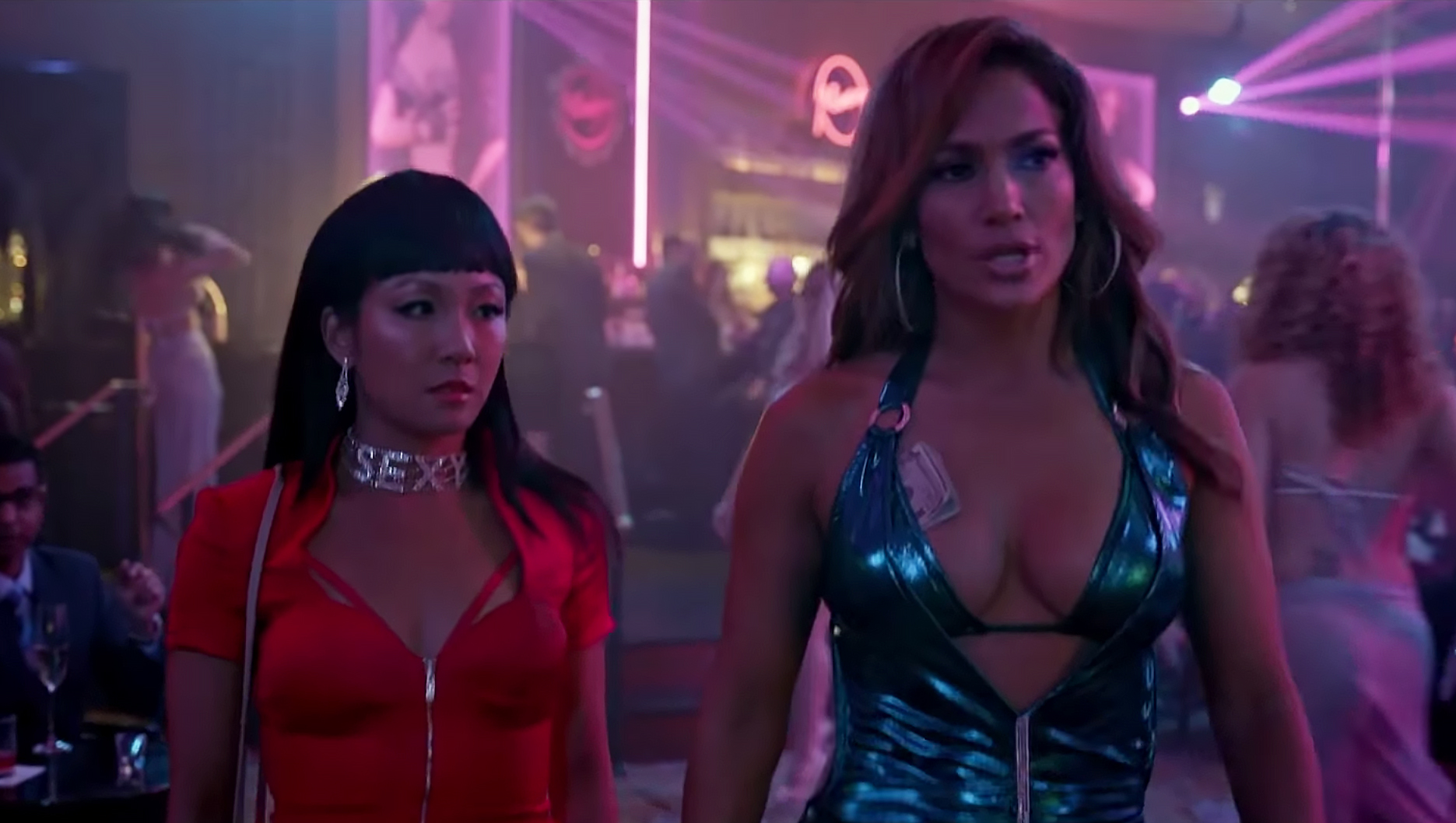The film, Hustlers (dir. Lorene Scafaria 2019), is a melodrama, based on a 2015 New York Times article, “The Hustlers at Scores”, written by Jessica Pressler (portrayed by Julia Stiles). The article is about strippers who take advantage of white, upper-class men who are CEO’s and stockbrokers on Wall Street by wiring themselves money while the men are unaware – due to ingestion of drugs and alcohol. Unfortunately, the best Hustlers showcased was the women chosen for the cast and ideologies parallel to the societal developments in the “Me Too” movement. The film lacks remarkable cinematic language as well as the apparent deconstruction of women’s’ sexuality.
The film’s primary cast consists of Jennifer Lopez (Ramona), Constance Wu (Destiny), Cardi B (Diamond), Lizzo (Liz), Keke Palmer (Mercedes) and Lili Reinhart (Annabelle). Since the cast is comprised of mostly A-lister celebrities who are women of color the overall reviews have mostly been praising the film for the diversity and dynamics of the protagonists. This skyrocketed the reception of the film to female viewers, but what tends to go unnoticed in a regular movie-going crowd is that the plot reinforces white supremacist ideologies. The women’s careers are a representation of an overly sexualized occupation that is considered low-class and trashy. Ironically, there is finally a movie with a strong pop-culture female presence and yet that presence is depicted in a tacky and unrefined manner.
Since Hustlers is based on a true story the roles and plot were nonnegotiable, but its interesting that one of the few films released about women minorities and portrays them as overly sexualized convicts is a film that does great at the box office. The message in the film then seems to imply that women are only going to succeed in films as thieves and not because they possess authority, but because they are sexy and are willing to use that trait to their advantage.
Another film with a similar narrative also received a similar reception – Oceans 8 (dir. Gary Ross, 2018). The cast is mainly women, who also are pop-culture icons such as: Rihanna, Anna Hathaway and Sandra Bullock. These women may be clever, but they still have to sexualize their bodies quite frequently to dumbfound the male impediments. The symbolic meaning for the two films is that no matter how brilliant or powerful a female is, she will always have to objectify herself to a man in order to succeed.
The mise-en-scene in the film tends to be too literal for my taste, in that the colors and the dream sequence are much too explicit in their intentions. The protagonist, Destiny, has a repetitive dream that she sees herself driving a car and cannot stop – obviously a direct relation to her relationship with Ramona and, consequently, barely imparts any implicit meaning at all. One element used heavily on the film is the naturalization of color coding in the film, a technique usually genre specific to melodramas. The film flips back and forth from the present to the past as Destiny explains her experiences. In the present, the room is purely white, representing that Destiny is purified from her past. In the past, the color pallet is gray-scaled and exotic in purples and reds – representing that the past was messy, dark, and sexualized.

Destiny (Wu, left) and Ramona (Lopez, right) in a flashback, at the strip club they perform at.
The theme of the film is intended to make a direct correlation to the “Me Too” movement and reversing the overall stereotypes onto the opposite gender. Rape has been a controversial topic racing through the nation recently, I thought that the film’s parallel to the women taking from the men was equivalent to that. In society, women are being objectified and sexualized for their physical appearances constantly, creating an atmosphere that is unnerving and uncomfortable. Sexual assaults have been signified as a disgrace, or as something that was their fault – that the assault had something do to their clothing or personality – and the harm caused by emotional connections leaves the victim vulnerable and isolated.
Hustlers takes the concept and threatens men in the same way but communicates the notion through their wallets. This same idea of vulnerability and isolation is demonstrated after the women rob the men of their “power” (money). The men have been stricken from their masculine identities and are rejected and scrutinized by the authorities when they try to report their situation. Sound familiar? The intention of this ideal was to make men understand how it feels to have something taken from them without consent; therefore, that “something” is being portrayed as a materialistic object rather than a metaphoric one for the sake of the film. There is physical amount to measure what was taken through the symbol, currency, women’s emotional strain cannot be measured, showing the impact of the crime. The real kicker is that the women barely gets a slap on their wrists – only a couple years of probation – after purposefully drugging and robbing men. Again, does this sound familiar?
Overall, the film makes some references to the political and societal issues through changing the perspective of the victim, but only in over sexualizing their cast of the year. Truly, the only thing allowing this film to get a good rating at the box office is the A-listers incorporated in the cast because the sloppy cinematography is not bringing in film critics and viewers.
Hustlers was released in theaters on September 13, 2019 and will be available for purchase on December 10, 2019.
![]()


Trackbacks/Pingbacks